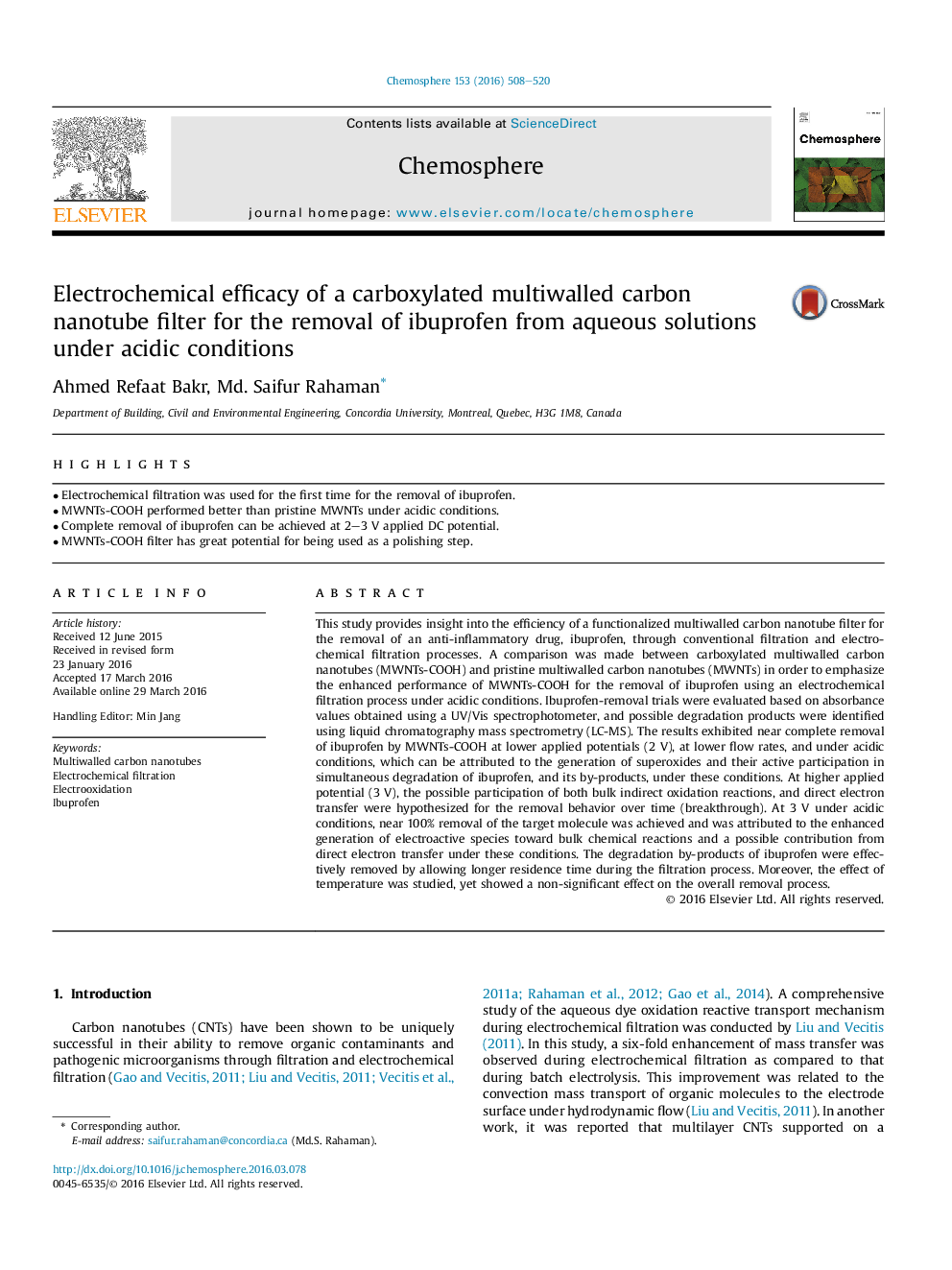| Article ID | Journal | Published Year | Pages | File Type |
|---|---|---|---|---|
| 4407684 | Chemosphere | 2016 | 13 Pages |
Abstract
This study provides insight into the efficiency of a functionalized multiwalled carbon nanotube filter for the removal of an anti-inflammatory drug, ibuprofen, through conventional filtration and electrochemical filtration processes. A comparison was made between carboxylated multiwalled carbon nanotubes (MWNTs-COOH) and pristine multiwalled carbon nanotubes (MWNTs) in order to emphasize the enhanced performance of MWNTs-COOH for the removal of ibuprofen using an electrochemical filtration process under acidic conditions. Ibuprofen-removal trials were evaluated based on absorbance values obtained using a UV/Vis spectrophotometer, and possible degradation products were identified using liquid chromatography mass spectrometry (LC-MS). The results exhibited near complete removal of ibuprofen by MWNTs-COOH at lower applied potentials (2Â V), at lower flow rates, and under acidic conditions, which can be attributed to the generation of superoxides and their active participation in simultaneous degradation of ibuprofen, and its by-products, under these conditions. At higher applied potential (3Â V), the possible participation of both bulk indirect oxidation reactions, and direct electron transfer were hypothesized for the removal behavior over time (breakthrough). At 3Â V under acidic conditions, near 100% removal of the target molecule was achieved and was attributed to the enhanced generation of electroactive species toward bulk chemical reactions and a possible contribution from direct electron transfer under these conditions. The degradation by-products of ibuprofen were effectively removed by allowing longer residence time during the filtration process. Moreover, the effect of temperature was studied, yet showed a non-significant effect on the overall removal process.
Related Topics
Life Sciences
Environmental Science
Environmental Chemistry
Authors
Ahmed Refaat Bakr, Md. Saifur Rahaman,
